The most fearless poisons

Hello again,%% username!
Thanks to everyone who appreciated my opus "The Most Terrible Poisons."
It was very interesting to read the comments, whatever they were, it was very interesting to answer.
')
I am glad that the "hit parade" like. If he didn’t like him, well, I did everything I could.
Comments and activity inspired me to write the second part.
So, imagine another deadly top ten!
Tenth place
White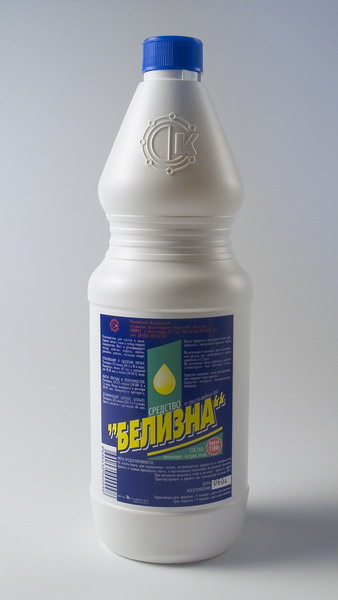

Yes, I know,% username%, that now you immediately exclaim: “Hooray, finally chlorine, great and terrible!” But all is not so.
First, whiteness does not contain chlorine, but sodium hypochlorite. Yes, it eventually collapses to chlorine, but still it is not chlorine.
Secondly, despite the fact that chlorine was in fact the first chemical warfare agent in the history of humanity (for the first time it was used in 1915 during the battle of Ypres - aha, but not mustard, although the name is from there), it immediately gone. "
The problem is that a person feels chlorine long before he is poisoned. And runs away a little later.
Judge for yourself: any person without sinusitis at 0.1-0.3 ppm will feel the smell of chlorine (although it is said that it also breaks through sinusitis). Concentration of 1-3 ppm is usually tolerated for no more than an hour — an unbearable burning sensation in the eyes leads to the idea that you have a lot of important things to do, but for some reason away from here. At 30 ppm, tears will run away absolutely immediately (and not after an hour), a hysterical cough will appear. At 40-60 ppm lung problems will begin.
It is lethal to remain in the atmosphere with a chlorine concentration of 400 ppm for half an hour. Well, or a few minutes - at a concentration of 1000 ppm.
World War I used the fact that chlorine is slightly more than twice as heavy as air - and therefore they allowed it on the plain, smoking the enemy out of the trenches. And there - already filmed the old kind and tried and tested way.
Of course, if you work in chlorine production and you are tied there near a tank with chlorine, there is a reason to be concerned. But to expect that you are poisoned by chlorine when washing the toilet bowl or because of the electrolysis of salt water - to put it mildly, it is not worth it.
Well, yes, if you’re still unlucky - note: there is no antidote for chlorine, they are treated with fresh air. Well, the restoration of the burned cloth, of course.
Ninth place
Vitamin A - well, or in common retinol

Everyone remembers vitamins. Well, their favor. Some people confuse it with booze and smoke - but that's it.
All the grandmothers in childhood talked to eat apples and carrots. I told you. I just loved the old Soviet carrot puree in such small jars!
But do not confuse a formidable retinol with natural carotene (which is in melon and carrot): with excessive use of carotenes, it is possible that the palms, soles of the feet and mucous membranes will yellow (I, by the way, had this in childhood!), But even in extreme cases, the symptoms of intoxication is observed. Scientists fed with carotene somehow different animals until they were fully salted , but they didn’t achieve anything but a strange look from animals.
So, LD 50 retinol 2 g / kg in rats that ate it. Considering the fact that vitamin A is fat soluble, if you eat salsa it will be less. In rats there was a loss of consciousness, convulsions, death.
Human cases were more interesting: a dose of vitamin A of 25,000 IU / kg causes acute poisoning, and daily use of a dose of 4,000 IU / kg for 6–15 months causes chronic poisoning (for reference: physicians are very difficult people to understand, and not only because of the handwriting - they consider vitamin A in IU - international units, 0.3 μg of retinol was taken as one unit of IU).
The following symptoms are characteristic of poisoning in humans: inflammation of the cornea of the eye, loss of appetite, nausea, enlarged liver, joint pain. Chronic vitamin A poisoning is observed with regular use of high doses of vitamin A, large amounts of fish oil.
Cases of acute fatal poisoning are possible by eating shark liver, polar bear, sea animals, husky (do not torture dogs!). Europeans began to face this at least since 1597, when members of the third expedition of Barents became seriously ill after they ate a polar bear's liver.
The acute form of poisoning manifests itself in the form of convulsions, paralysis. In chronic form of overdose increases intracranial pressure, which is accompanied by headache, nausea, vomiting. At the same time, there is puffiness of the macula and associated visual impairment. Hemorrhages are manifested, as well as signs of the hepatic and nephrotoxic effects of large doses of vitamin A. Spontaneous fractures of the bones can occur. Excess vitamin A can cause birth defects and therefore should not exceed the recommended daily allowance, and pregnant women should not drink it at all.
To eliminate poisoning, mannitol is prescribed, which reduces intracranial pressure and eliminates the symptoms of meningism, glucocorticoids, accelerates vitamin metabolism in the liver, and stabilizes lysosome membranes in the liver and kidneys. Vitamin E also stabilizes cell membranes.
So,% username%, remember: not everything that is useful is useful in large quantities.
Eighth place
Iron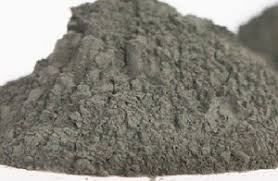

Certainly toxic is an iron rod in the brain, but it is not accurate .
But seriously, with iron, the situation is very close to that of vitamin A.
Iron is prescribed to some to eliminate iron deficiency anemia. My memorable grandmother always advised to eat apples - they have a lot of iron (and everyone knows this bearded anecdote).
Earlier, iron was literally eaten - carbonyl iron in the picture above - that was what it ate: in the stomach it was full of hydrochloric acid, so that the fine iron dissolved there and that was enough.
Then they began to prescribe iron sulfates and iron lactates. The joke of iron is that it must be bivalent: trivalent iron to the body and not nat, in addition, it happily falls into the sediment at a pH above 4.
7-35 g of iron will reliably relieve you,%% to the next world. And I'm not talking about a metal object in the right place of the body - I'm talking about iron salts. With children it is even more difficult (children are always difficult): 3 grams of iron are lethal for children under 3 years old. By the way, according to statistics, this is the most common form of random child poisoning.
The behavior of excess iron is very reminiscent of heavy metal poisoning (and, by the way, it is treated almost as well). Iron can accumulate in the body, as well as heavy metals - but with some hereditary and chronic diseases or with excessive influx from the outside. People with excess iron content suffer from physical weakness, lose weight, are more likely to get sick. At the same time, it is often much more difficult to get rid of excess iron than to eliminate its deficiency.
In severe iron poisoning, the intestinal mucosa is damaged, liver failure develops, nausea and vomiting appear. Diarrhea and the so-called “black chair” are typical - well, you understand. If you run - severe forms of liver damage, coma, meeting with long-dead relatives.
Seventh place
Aspirin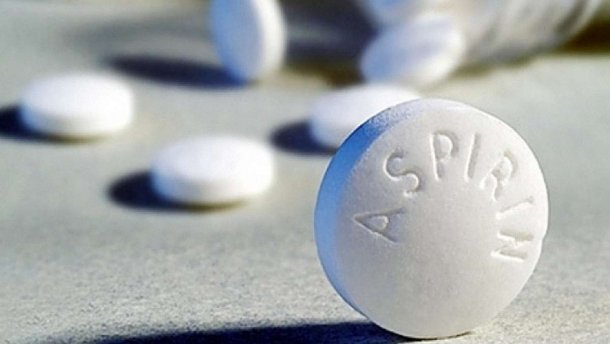

For some reason, now I remember all the American films, in which the heroes with a headache eat packs of pills directly. Good lord
Acetylsalicylic acid or aspirin - as Felix Hoffman called it, who synthesized this vivifying product on August 10, 1897 in the laboratories of Bayer AG, has an LD 50 in rats at 200 mg / kg. Yes, it is a lot, you can not eat so many pills, but as with any medicine, aspirin has a side effect. And they are so-so: problems with the digestive tract and tissue edema. However, if you still really eat aspirin, then with an acute overdose (this is when one time - but the car) mortality is 2%. Chronic overdose (this is when high doses - and for a long time) is more often lethal, mortality is 25%, and, like with iron, chronic overdose can be especially severe in children.
In case of poisoning with aspirin, there is acute gastric disorder, confusion, psychosis, stupor, tinnitus, drowsiness.
Treat as any overdose: activated carbon, intravenous dextrose and normal saline, sodium bicarbonate and dialysis.
Special attention is given to Reye's syndrome - a rare but serious illness characterized by acute encephalopathy and fatty deposits in the liver. This thing can occur when children or teenagers are given aspirin for a fever or other illness, or infection. In the period 1981-1997. The US Centers for Disease Control and Prevention reported 1,207 cases of Ray's syndrome in people under 18 years of age. Of these, 93% reported that they had been ill for three weeks prior to the onset of Ray's syndrome, most often with a respiratory infection, chickenpox, or diarrhea.
It looks like this:
- 5-6 days after the onset of a viral disease (with chickenpox - 4-5 days after the onset of rash) nausea and uncontrollable vomiting develop suddenly, accompanied by a change in mental status (ranging from slight lethargy to deep coma and episodes of disorientation, psychomotor agitation).
- In children under 3 years of age, respiratory impairment, drowsiness and convulsions may be the main signs of the disease, and in children of the first year of life there is a tension of a large spring.
- In the absence of adequate therapy, a rapid deterioration of the patient’s condition is characteristic: the rapid development of coma, seizures, and respiratory failure.
- An enlarged liver is observed in 40% of cases, but jaundice is rarely observed.
- Characterized by an increase in AST, ALT, ammonia in the serum of patients.
How to avoid it? It's simple: you can't give aspirin to your child if he gets sick with the flu, measles or chicken pox. Use caution when prescribing acetylsalicylic acid at high temperatures in children under 12 years of age. In this situation, it is recommended to replace acetylsalicylic acid with paracetamol or ibuprofen. Call your doctor right away if your child shows signs of vomiting, severe headache, lethargy, irritability, delirium, respiratory distress, stiffness of the arms and legs, coma.
Take care of the kids, yet they are our legacy.
Sixth place
Carbon dioxide

Yes, yes, we all breathe and emit this very carbon dioxide. And the organism will not be scattered by anything so easy! In the air, by the way, carbon dioxide is about 0.04% - for comparison, argon in the air is 20 times more.
In addition to you and other animals, carbon dioxide is emitted at full burning and is found in all effervescent beverages - both soft and more interesting (about them - below).
When the concentration is already 0.1% (this carbon dioxide content is sometimes observed in the air of the megalopolises), people begin to feel weakness, drowsiness - do you remember how irresistible you were to yawn? When elevated to 7-10%, suffocation symptoms develop, manifested in the form of headache, dizziness, hearing loss and loss of consciousness (symptoms similar to symptoms of altitude sickness), these symptoms develop, depending on the concentration, over a period of several minutes. up to one hour.
When inhaling air with very high gas concentrations, death occurs very quickly from suffocation caused by hypoxia.
Inhalation of air with a high concentration of this gas does not lead to long-term health problems. After the victim is removed from the atmosphere with a high concentration of carbon dioxide, full recovery of health and well-being quickly ensues.
And carbon dioxide is 1.5 times heavier than air - and this must be taken into account in terms of accumulations in niches and basements.
Air your room,%% username!
Fifth place
Sugar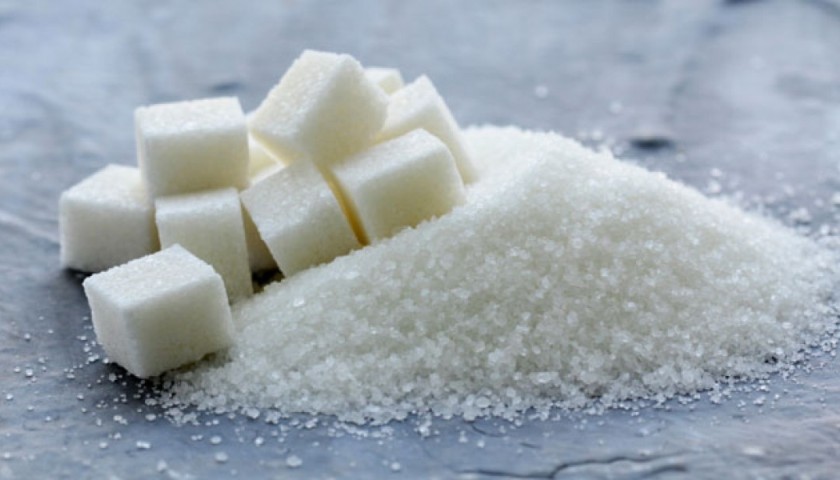

What sugar looks like - everyone knows. About holivar - what to drink with sugar, and what - without: coffee or tea - we will not, he took too many lives.
In fact, sugar (or rather, glucose) - is one of the main nutrient compounds - and the only one that is absorbed by the nervous tissue. Without sugar, you cannot think and read this text,%% username!
Nevertheless, sugar has a toxic dose - 50% of the rats die when they eat sugar 30 g / kg (do not ask how they stuffed it). I remember the subway car in New York in 2014, where all diseases were written off for sugar, from impotence to heart attack. I still thought then: and how did humanity survive without chemical sweeteners?
Anyway, sugar is toxic in large (as you have already noticed - VERY large) doses. Symptoms of poisoning are relatively scarce:
- Depressed state

- Gastrointestinal disorders.
But actually there are quite a few people among us for whom sugar is really poison. This is diabetics. I am a chemist, I am not a doctor, but I know that diabetes can be of different types, of different severity, because of different reasons and in different ways are treated. Therefore,% username%, if you noticed:
- Polyuria - enhanced urine excretion caused by an increase in the osmotic pressure of urine due to glucose dissolved in it (there is normally no glucose in the urine). Manifested by frequent frequent urination, including at night.
- Polydipsia (constant unquenchable thirst) - due to significant loss of water in the urine and increased osmotic pressure of the blood.
- Polyphagy - a constant unquenchable hunger. This symptom is caused by a metabolic disorder in diabetes, namely, the inability of cells to absorb and process glucose in the absence of insulin (hunger among affluence).
- Weight loss (especially characteristic of type 1 diabetes) is a frequent symptom of diabetes, which develops despite an increased appetite of patients. Slimming (and even depletion) due to increased catabolism of proteins and fats due to the shutdown of glucose from the energy metabolism of cells.
- Secondary signs: itching of the skin and mucous membranes, dry mouth, general muscle weakness, headache, inflammatory skin lesions, difficult to treat, visual impairment.
- Blow to the hospital and donate blood for sugar!
Diabetes is far from a verdict, it is treated, but if you don’t heal and eat sweets, then you are waiting for: heart disease, blindness, kidney damage, nerve damage, the so-called diabetic foot - google, you will like it.
Fourth place
Salt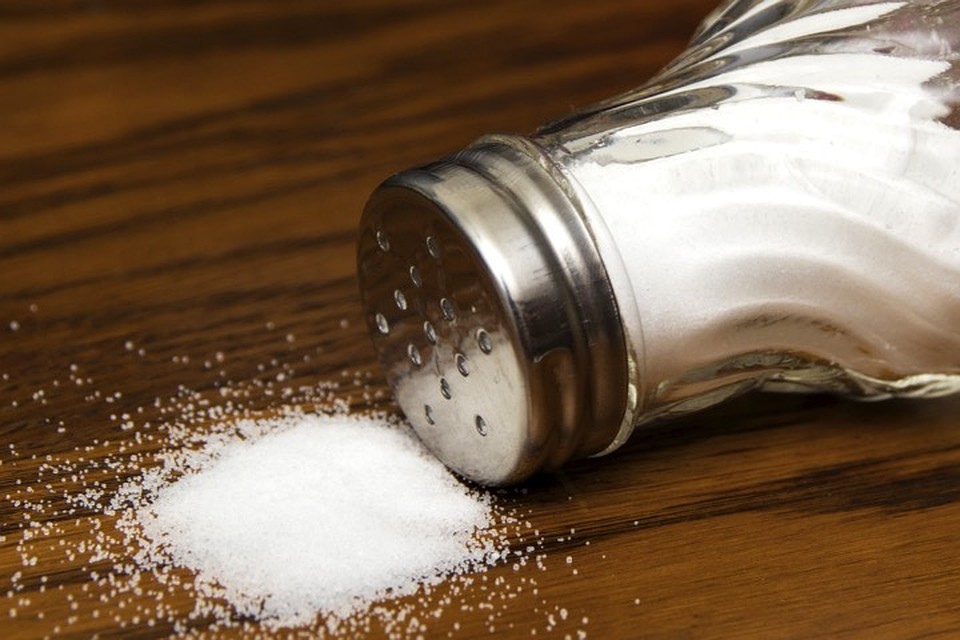

“Salt and sugar are our white enemies,” right? Well, that's why sugar follows salt.
It is hard to imagine our food without salt, and by the way we use it solely because of personal preferences: sodium and chlorine are full in products, an additional source is simply not needed.
Despite the fact that salt performs the most important function of supporting the water-salt balance in the body, ensuring the proper functioning of almost everything - from blood to kidneys, 3 g / kg of rat or 12.5 g / kg of a person is capable of killing.
The reason is the violation of this very water-salt balance, which leads to kidney failure, a sharp increase in blood pressure and death.
I don’t think that someone is able to eat so much salt (except for the argument - well, ok, a good variant of the Darwin prize), but even small “overdoses” of salt do not have the best effect: it is known that reducing salt intake to 1 tsp in a day and less provides a decrease in blood pressure of 6-8 mm Hg. On the background of the fact that hypertension mows people more abruptly than AIDS and cancer , I do not think that reducing salt intake is such a merely insignificant measure of survival.
Bonus trio! Third place
Caffeine

And now we'll talk about drinks. Coffee, tea, cola, energy - all this contains caffeine. How many cups of coffee did you drink today? I, while writing all this - not one, but I really want to ...
By the way, 1,3,7-trimethylxanthin, guaranine, matein, methylteobromine, thein - is the same in profile, just other names, very often invented, to exclaim: “Are you in this drink not a single gram of caffeine - there ... - this completely different and much more useful! ”Historically, it was like this: in 1819, the German chemist Ferdinand Runge
50% of dogs die if they take 140 mg / kg of caffeine with food. At the same time, they experience acute renal failure, nausea, vomiting, internal hemorrhages, cardiac arrhythmias, convulsions. An unpleasant death, yes.
In humans, in small doses, caffeine has a stimulating effect on the nervous system - well, it was all checked for yourself. With prolonged use may cause weak dependence - theism.
Under the influence of caffeine, cardiac activity is accelerated, blood pressure rises, mood improves slightly for about 40 minutes due to the release of dopamine, but after 3-6 hours the effect of caffeine disappears: fatigue, lethargy, and reduced working capacity appear.
A boring mechanism explaining the effects of caffeine.
The basis of the psychoactive effect of caffeine is its ability to inhibit the activity of the central adenosine receptors (A1 and A2) in the cerebral cortex and subcortical formations of the central nervous system. , , , . I (A1) , . 1- , .
1- , 2- . , 2- D2 . 2- D2 , .
1- , 2- . , 2- D2 . 2- D2 , .
In short, caffeine is blocking something there. Like opiates. Like LSD. Therefore, addiction will be, but since the blocking is not so strong, and the receptors are not so vital, theism is not addiction (although many coffee lovers will argue).
Symptoms of eating caffeine - abdominal pain, agitation, anxiety, mental and motor agitation, confusion, delirium (dissociative), dehydration, tachycardia, arrhythmia, hyperthermia, frequent urination, headache, tactile or pain sensitivity, tremors or muscle twitching; nausea and vomiting, sometimes with blood; tinnitus, epileptic seizures (in acute overdose - tonic-clonic convulsions).
Caffeine in doses of more than 300 mg per day (including over the abuse of coffee - more than 4 cups of natural coffee, 150 ml each) can cause anxiety, headache, tremors, confusion, disturbances in heart function.
At doses of 150–200 mg per pound of human body weight, caffeine causes death. Just like dogs.
So, damn, well, where is my coffee?
Second place
Nicotine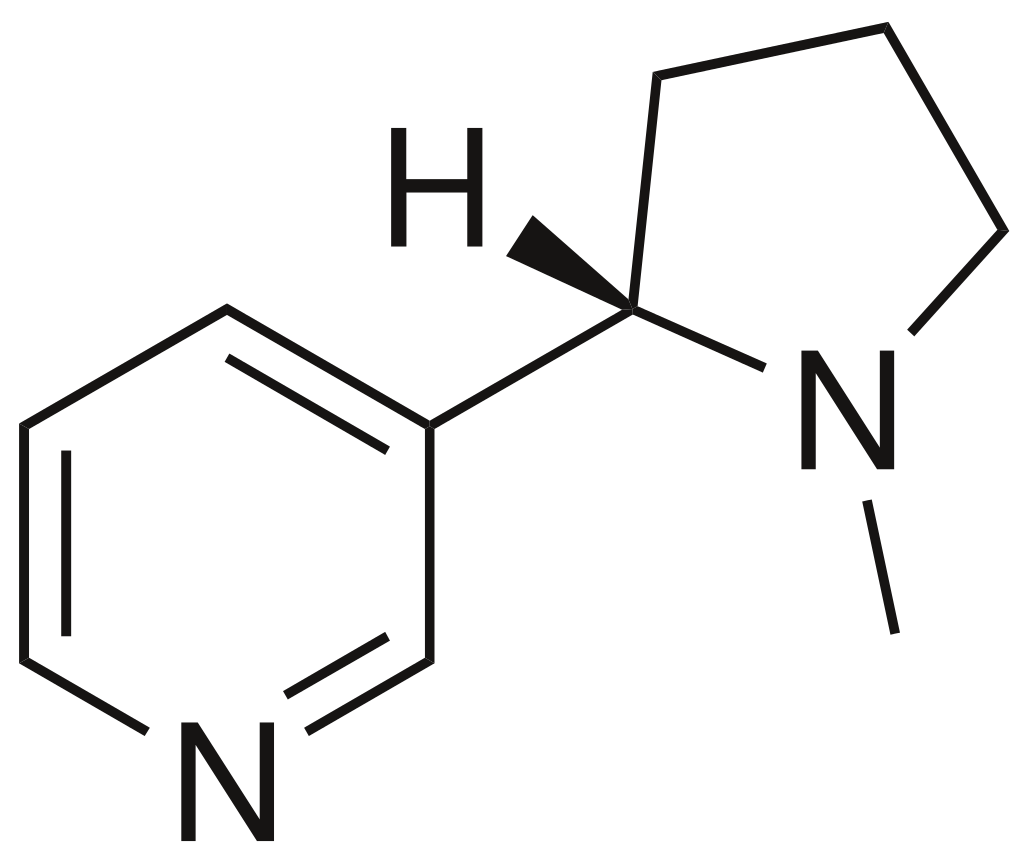

Well, about the harm of smoking, everyone knows. And about the fact that nicotine is poison, too. But let's figure it out.
The sensational case of poisoning in Belgium in 1850, when Count Bokarme was accused of poisoning his wife’s brother, is connected with nicotine toxicity. The consultant was a Belgian chemist Jean Serva Stas, who, during a difficult analysis, not only found that nicotine was poisoned, but also developed a method for detecting alkaloids, which, with minor modifications, is still used in analytical chemistry.
After that, nicotine did not study and did not identify just lazy. At the moment, the following is known.
Once nicotine enters the body, it quickly spreads through the bloodstream and can cross the blood-brain barrier. That is, to get right into the brain. On average, 7 seconds are enough after inhaling tobacco smoke, so that nicotine reaches the brain. The half-life of nicotine from the body is about two hours. Nicotine, inhaled with tobacco smoke while smoking, accounts for a small proportion of the nicotine contained in tobacco leaves (most of the substance burns, pechalka). The amount of nicotine absorbed by the body during smoking depends on many factors, including the type of tobacco, whether all the smoke is inhaled and whether a filter is used. In the case of chewing and snuff tobacco, which are placed in the mouth and chewed or inhaled through the nose, the amount of nicotine entering the body is much greater than when smoking tobacco.Nicotine is metabolized in the liver by the enzyme cytochrome P450 (mainly CYP2A6, as well as CYP2B6). The main metabolite is cotinine.
The effects of nicotine on the nervous system are well studied and ambiguous. Nicotine acts on nicotinic acetylcholine receptors: the protonated nitrogen atom of the pyrrolidine cycle in nicotine mimics the quaternary nitrogen atom in acetylcholine, and the nitrogen atom of pyridine has the character of a Lewis base, as does the oxygen of the keto group of acetylcholine. In low concentrations, it increases the activity of these receptors, which, among other things, leads to an increase in the amount of the stimulating hormone adrenaline (epinephrine). An adrenaline rush leads to an acceleration of the heartbeat, an increase in blood pressure and increased respiration, as well as a higher level of glucose in the blood.
The sympathetic nervous system, acting through the celiac nerves on the medulla of the adrenal gland, stimulates the release of adrenaline. Acetylcholine, produced by the preganglionic sympathetic fibers of these nerves, acts on nicotinic acetylcholine receptors, causing cell depolarization and calcium influx through potential-dependent calcium channels. Calcium triggers the exocytosis of chromaffin granules, thereby contributing to the release of adrenaline (and norepinephrine) into the blood.
I already hit your brain worse than nicotine? Yes? Well then, about pleasant.
Among other things, nicotine increases the level of dopamine in the ways of pleasure centers in the brain. It has been found that smoking tobacco inhibits monoamine oxidase, the enzyme responsible for the breakdown of monoamine neurotransmitters (for example, dopamine) in the brain. It is believed that nicotine itself does not suppress the production of monoamine oxidase; other components of tobacco smoke are responsible for this. The increased dopamine content excites the pleasure centers of the brain, these same brain centers are responsible for the “pain threshold of the body” therefore, the question of whether a smoker gets pleasure is still open.
Despite its strong toxicity, when consumed in small doses (eg when smoking), nicotine acts as a psychostimulant. Nicotine effect on mood is different. By causing the release of glucose from the liver and adrenaline (epinephrine) from the adrenal medulla, it causes arousal. From a subjective point of view, this is manifested by feelings of relaxation, calmness and liveliness, as well as a moderately euphoric state.
The use of nicotine leads to a decrease in body weight, reducing appetite as a result of stimulation of POMC neurons and an increase in blood glucose levels (glucose, affecting saturation and hunger centers in the hypothalamus of the brain, dulls the feeling of hunger). True, an affordable, understandable and useful diet "do not eat a lot" works even more efficiently.
As we can see, the effect of nicotine on the body is quite difficult. What follows from this:
- Nicotine - a substance that interacts with nerve receptors
- Like many similar substances, nicotine is addictive and addictive.
By the way, patients with mental disorders have an increased predilection for smoking (do you smoke? - think and go to a psychiatrist: there are no healthy people - they are under-examined). A large number of studies worldwide claim that people with schizophrenia are more likely to smoke (20 different countries examined a total of 7593 patients with schizophrenia, of whom 62% were smokers). In 2006, 80% or more people with schizophrenia smoke in the United States, compared with 20% of the total non-smoking population (according to NCI). There are a number of hypotheses about the causes of this addiction, explaining it as a desire to resist the symptoms of the disorder, and the desire to resist the negative effects of antipsychotics. According to one of the hypotheses, nicotine itself violates the psyche.
Nicotine is extremely toxic to cold-blooded animals. Acts as a neurotoxin, causing paralysis of the nervous system (respiratory arrest, cessation of cardiac activity, death). The average lethal dose for humans is 0.5–1 mg / kg, for rats — 140 mg / kg through the skin, for mice — 0.8 mg / kg intravenously and 5.9 mg / kg when administered intraperitoneally. Nicotine is poisonous for some insects, as a result of which it was previously widely used as an insecticide, and now nicotine derivatives, such as, for example, imidacloprid, are still used in the same capacity.
Prolonged use can cause such diseases and dysfunctions as hyperglycemia, arterial hypertension, atherosclerosis, tachycardia, arrhythmia, angina pectoris, coronary heart disease, and heart failure.
In fact, nicotine toxicity is practically nothing against the background of the rest of the charms, namely:
- Resins when smoking - contribute to the development of cancer, including cancer of the lung, tongue, larynx, esophagus, stomach, etc.
- Non-hygienic smoking - contributes to the development of gingivitis and stomatitis.
- Products of incomplete combustion (carbon monoxide) - well, here it is clear, read my previous opus
- The deposition of tar in the lungs - the smoker's morning cough, bronchitis, pulmonary emphysema.
At the moment, none of the methods of smoking saves 100% of the consequences - and therefore all of your filters, hookahs, etc. - does not work.
Vapers should not relax too - and the reason is simple:
- , — ! , . ( ), .

- I already said that nicotine was used as a pesticide. Since 2014, it has practically not been used in the United States, in the European Union - generally banned since 2009. However, this does not prevent its use in China ...
Currently, there is pharmaceutical-grade nicotine on the market (Pharma Grade, USP / PhEur or USP / EP). But there is also an insecticide that is produced in China. Warning: what's cheaper? Again, I’m not a vaper, but I’d google for interest and compare the price of what you bought in this jar to how much it should have cost. But you can at some pointfeel like a cockroach tofully enjoy the impurities in low-quality nicotine.
In short, at the moment, mankind does not use completely safe ways to use nicotine. Is it necessary?
And our winner! Meet First place
Ethanol
.
.
, 2 5 -, ,
. « ».
:
— ?
— . , , : - — «». — !
.
, 2 5 -, ,
. « ».
:
— ?
— . , , : - — «». — !
In general, there is even ethanol toxicology - the area of medicine that studies the toxic substance ethanol (alcohol) and everything connected with it. Therefore, do not expect that I will be able to squeeze a whole section of medicine into several paragraphs.
In fact, humanity has been familiar with ethanol for a very long time. The discovered Stone Age vessels with the remnants of fermented beverages make it possible to judge that the production and use of alcoholic beverages already existed in the Neolithic era. Beer and wine - one of the oldest drinks. Wine has become one of the most significant cultural symbols for different peoples of the Mediterranean, and has taken an important place in their mythology and rituals, and later in Christian worship (see the Eucharist). For people who grow cereals (barley, wheat, rye), beer was the main festive drink.
By the way, being a by-product of glucose metabolism, in the blood of a healthy person up to 0.01% of endogenous ethanol can be contained.
And, despite all this, until now science is not exactly sure about:
- mechanism of action of ethanol on the central nervous system - intoxication
- mechanism and causes of a hangover
The effect of ethanol on the body is so multifaceted that it deserves a separate article. But since I started ...
It is believed that ethanol, having pronounced organotropicity, accumulates more in the brain than in the blood. Even low doses of alcohol trigger the activity of inhibitory GABA - brain systems, and it is this process that leads to a sedative effect, accompanied by muscle relaxation, somnolence and euphoria (intoxication). Genetic variations of GABA receptors may influence the propensity to alcoholism.
Especially pronounced activation of dopamine receptors is observed in the nucleus accumbens and in the ventral regions of the brain lid. The reaction of these particular zones to the dopamine released under the action of ethanol is due to euphoria, with which there may be a possibility of alcohol dependence. Ethanol also leads to the release of opioid peptides (eg, beta-endorphin), which, in turn, are associated with the release of dopamine. Opioid peptides also play a role in the formation of euphoria.
Finally, alcohol stimulates the brain's serotonergic system. There are genetically determined differences in sensitivity to alcohol, depending on the alleles of the genes of serotonin carrier proteins.
The effect of alcohol on other receptors and mediator systems of the brain, including adrenaline, cannabinol, acetylcholine receptors, adenosine and stress-regulating (eg, corticotropin-releasing hormone) systems, is being actively studied.
In short, everything is very confusing and represents an excellent field for
Ethyl alcohol poisoning over a long period occupy a leading place among household poisoning in the absolute number of deaths. More than 60% of all fatal poisonings in Russia are caused by alcohol. However, regarding the lethal concentration and the dose - everything is not so simple. It is believed that the lethal concentration of alcohol in the blood is 5–8 g / l, the lethal single dose is 4–12 g / kg (about 300 ml of 96% ethanol), but in those with chronic alcoholism, alcohol tolerance may be significantly higher.
This is all explained by different biochemistry: the speed of intoxication and its intensity are different both in different nations and in men and women (this is due to the fact that the isozyme spectrum of the enzyme alcohol dehydrogenase (ADH or ADH I) is genetically determined - the activity of different isoforms of ADH has clearly pronounced differences different people). In addition, the characteristics of intoxication also depend on body weight, height, amount of alcohol consumed and the type of drink (the presence of sugar or tannins, carbon dioxide content, strength of the drink, snack).
In the body, ADH oxidizes ethanol to acetaldehyde and, if everything is good, further to safe and extremely high-caloric acetic acid — yes, I am not joking: “something has become colder — is it not time we succumb” has a very biochemical rationale: ethanol is an extremely high-calorie product. In practice, everything is aggravated either by a lack of oxygen for oxidation (smoky room, stale air is all from here), or an excess of ethanol, or inactivity of ADH - the result of a genetic predisposition or elemental hard drinking. In total, everything stops at acetaldehyde - which is a toxic, mutagenic and carcinogenic substance. There is evidence of carcinogenicity of acetaldehyde in animal experiments, in addition, acetaldehyde damages DNA.
The whole problem of ethanol is almost entirely associated with acetaldehyde, but in general, the toxic effect is essentially unique and comprehensive. Judge for yourself:
- - . . . , . , . . , .
- , , — . - . . . «» ( () ) — , %username%, ! , , . , , . , , 10 % . ...
- . , , ( ), . . , , , , . («» ) ( 30 ). , , , .
- , - . . . . . , . , , ? ...
- , , . , , .
Fuh. Good thing I didn't add brandy to my coffee, is it? In short, drinking a lot is bad. And if you do not drink?
The definition of "moderate dose of alcohol" is revised depending on the accumulation of new scientific data. Currently, they are guided by the definition adopted in the USA: no more than 24 g of ethanol per day for most adult men and no more than 12 g for most women.
The problem is that it is almost impossible to build a “clean” experiment "- it is impossible to find a sample of people in the world who never drank. And if you can, you cannot eliminate the influence of other factors — the same ecology. And if you can, you cannot find such so as not to have hepatitis, have a healthy heart, and so on.
And still people lie. This generally complicates things.
Do you think you know holivary? Try to google the articles on the effects of alcohol from Filmore, Harris, and a bunch of other scientists who have dedicated themselves to the study of
And if you leave the science - in the popular literature on the benefits of alcohol as much nonsense as about the harm (only female sex hormones in beer are worth).
Until these questions are clarified, the following advice would be most reasonable:
- Those who currently do not drink at all should not recommend alcohol consumption solely for the purpose of health care, since it has not been established that alcohol itself is a causal factor for improving health.
- Persons who consume alcohol and who are not at risk of alcohol problems (pregnant or lactating women, drivers of cars or other potentially dangerous mechanisms, taking drugs with which alcohol is contraindicated, people with a family history of alcoholism or those who recover from alcoholism) should not consume more than 12-24 grams of ethanol per day in accordance with the recommendations of the Guide to Nutrition USA.
- Persons who consume alcohol in excess of moderate doses should be advised to reduce their intake.
By the way, scientists agreed on one thing - it is in the so-called J-shaped mortality curve. It was found that the relationship between the amount of alcohol consumed and mortality among middle-aged and older men is similar to the letter “J” in a lying state: while the death rate of those who quit drinking and drink large quantities is significantly increased, the mortality (total of all causes) is 15-18% less among drinkers in small quantities (1-2 units per day) than among non-drinkers. The reasons were different - from deep biochemistry and medicine, where the devil himself breaks a leg - to better social status and quality of health of moderate drinkers, but the fact remains (even there were such studies that showed that the diet of moderate drinkers contains less fat and cholesterol compared to non-drinkers, that moderate-drinking people play sports more often and are more physically active than completely non-drinking ones - in short, everyone understands that even scientists do not want to completely give up alcohol, which they try to justify in every way).
Absolutely and everyone agrees with this that the consumption of large quantities of alcohol leads to a significant increase in mortality. For example, a US study found that people who drink 5 or more units of alcohol on days when they drink have a 30% higher mortality than those who consume only one unit. According to another study, drinkers who drink six or more units of alcohol (at a time) have a 57% higher mortality rate than drinkers less.
By the way, a study of the relationship between mortality and tobacco use showed that complete cessation of tobacco, along with moderate alcohol consumption, gave a significant decrease in mortality.
Another area of controversy was the type of preferred alcoholic beverage. The French paradox (low mortality from coronary heart disease in France) suggested that red wine is especially good for health. This specific effect could be explained by the presence of antioxidants in wine. But the studies failed to demonstrate significant differences between the risk of coronary heart disease and the type of preferred alcoholic beverages. And why is red, not white? Why not brandy? In short, everything is difficult.
What really should not be done is to drink while taking the medicine.
As already shown above, the effect of alcohol on the body is very difficult, and in some places it is not fully understood. When a certain pharmaceutical preparation is mixed into this soup, nothing is clear there.
- First, the effectiveness of the drug may change - and in any direction. On the dosage we are no longer talking.
- Secondly - the biochemical bump caused by ethanol, it is not known how it will affect the drug. May increase side effects. It may even make useless (not counting the side effects, of course). And maybe kill. Nobody knows.
- Thirdly - the liver, which is already concerned about processing unknown garbage from pharmacists, is not very happy about the need to also process alcohol. May refuse completely.
Usually in the instructions (who reads them?) To drugs they write about the possibility of drinking with alcohol - this is if it was checked. And you can try it yourself - and then tell everyone about your experience. Well, this is if you have another body in stock.
From what I have already written above:
- Simultaneous use of aspirin (acetylsalicylic acid) and alcohol can lead to ulceration of the gastric mucosa and bleeding.
- Alcohol consumption negatively affects the results of vitamin therapy. In particular, the defeat of the gastrointestinal tract leads to the fact that vitamins taken orally are poorly absorbed and absorbed, and leads to a violation of their transformation into an active form. This is especially true for vitamins B1, B6, PP, B12, C, A, folic acid.
- Smoking enhances the toxic effect of alcohol - both in terms of the suppression of oxidative processes due to oxygen starvation (remember acetaldehyde. Yes), and in terms of the joint blocking effect on the receptors by nicotine and alcohol.
In short, alcohol is not easy. Whether it’s good or bad, no one knows for certain, but they don’t rush to completely abandon it.
You decide.
By the way, many believe - and, honestly, I, too - that the first alcoholic poisoning is a guarantee against the onset of alcoholism. Well, that is very useful in identifying the desire of a young child to drink a beer to sit with him and drink so that he can get to the green troubadours. So with the crystal head in the morning and in general all the attendant. Usually, after such an experience, the young child has an understanding of the harm that he liked.
The opinion is controversial, purely pedagogical, but as it is.
By the way, alcoholism is treated in the same way - they prescribe substances blocking ADH - for example, disulfiram or co-rin . The latter is pure nature, organic matter and ecology: this substance is extracted from the mushrooms Coprinopsis and Ampulloclitocybe — in our countries, these are dung beetles (although there is also a boletus fleshy, flake scaly, govorushka and lepiota rough, but not as common as mushroom pickers say). “Koprinov syndrome” has long been known, even Slavs knew about the properties of a gray dung beetle. The essence is simple: after eating these mushrooms, ADH is blocked up to a day. So, if there was alcohol going under the mushrooms, it will not seem like a little: there will be a severe poisoning with a severe hangover. But the main thing here is not to overdo it: you, of course, do not poison yourself with a mushroom - but with vodka you can bring yourself to reanimation easily.
On this optimistic note, I will take my leave. Hope that turned out to be interesting again.
Wine is our friend, but there is treachery in it:
You drink a lot - poison, you drink a little - medicine.
Do not harm yourself excessively,
Drink in moderation - and the kingdom will last ...
- Abu Ali Hussein ibn Abdullah ibn al-Hassan ibn Ali ibn Sina (Avicenna)
Source: https://habr.com/ru/post/450398/
All Articles